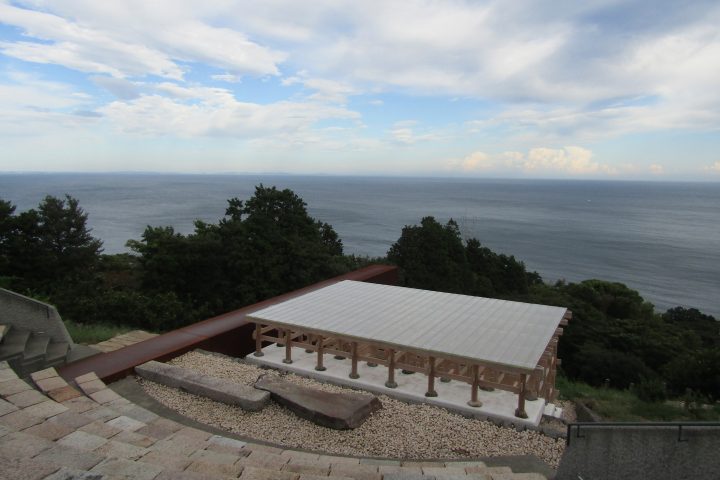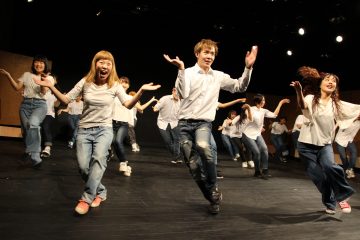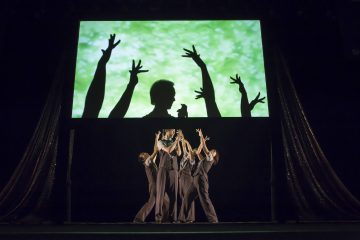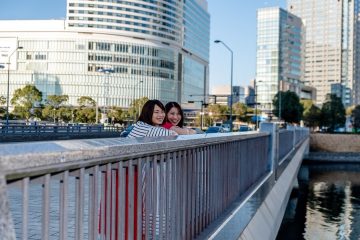Workshop by Kaiji Moriyama “Dance! Let’s draw!”
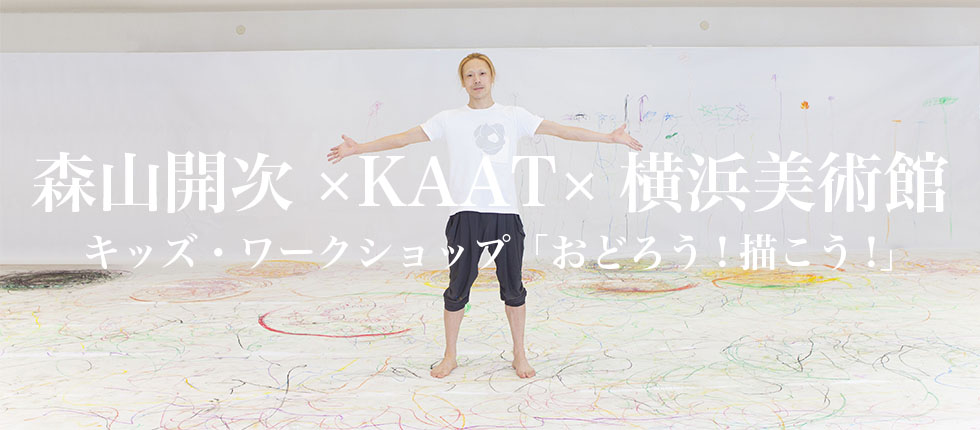
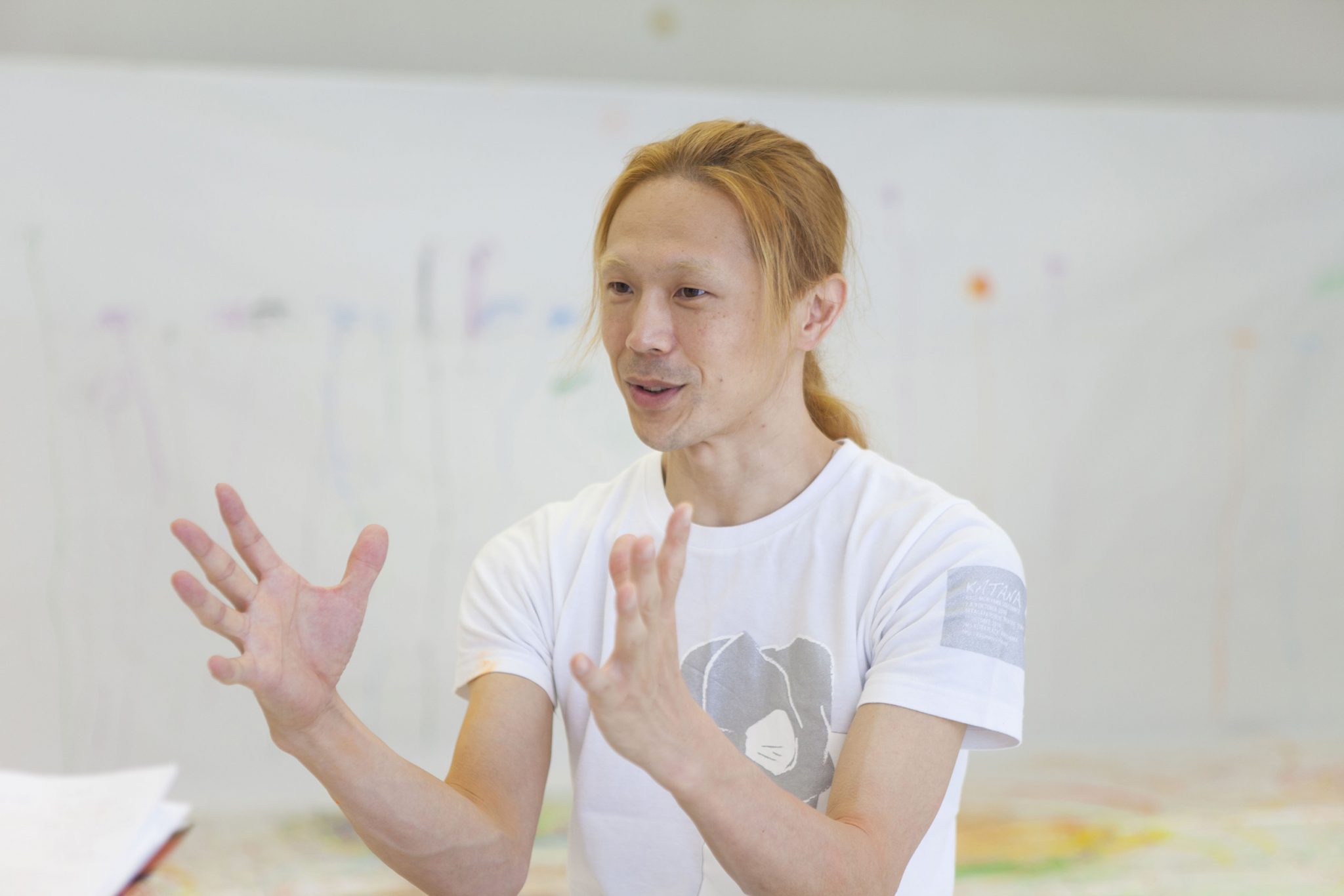
Mr. Kaiji Moriyama
<After the workshop with the children>
What was it like doing a workshop with children?
I had fun. It was my first time holding a drawing workshop with children, so I was a little nervous about what to do. But it's not good to think about things like this too much. It was great to be able to actually interact with children and create something while feeling it.
No matter how much you plan a workshop, it will never turn out well. Because no matter how much you plan, today's movements can only be made today. In today's workshop, we tried the challenge of ``tracing the line we drew and checking its trajectory.'' Approach the drawn lines with movement. Actually, I came up with this idea after looking at the flow of the scene. I want to praise myself for noticing this well. (lol).
I personally like drawing, and I always draw various patterns in the air while moving. We were doing a ``letter dance'' today as well, and this time we had a chance to try it out with the children.
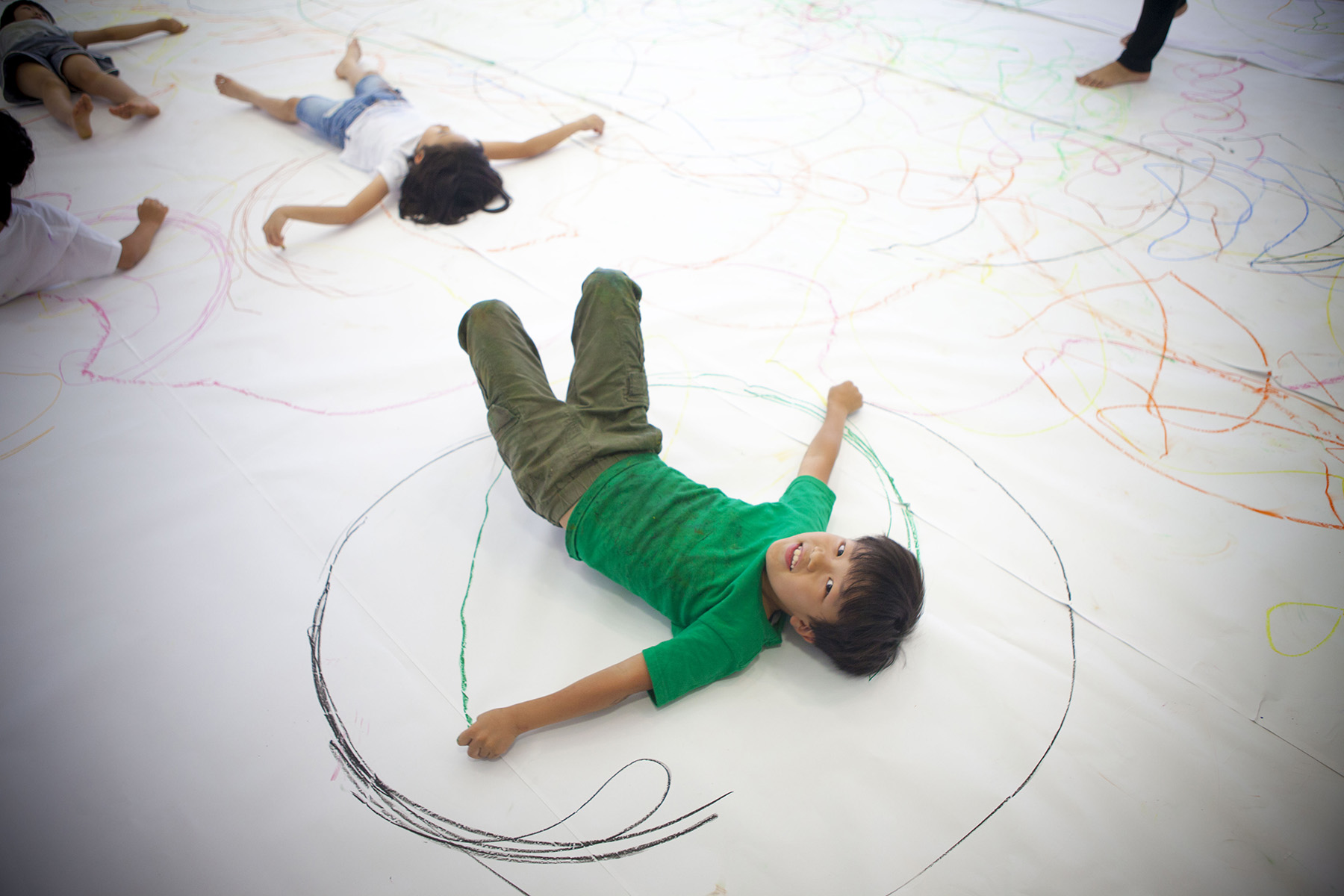
Holding a crayon in each hand, lie on your back and draw an arc with your hands at the center.
The target audience was 1st to 4th grade elementary school students.What did the children think?
The elementary school students who participated this time are obedient and flexible. I was able to return to my childhood by working with my children. This time, we asked them to freely draw on a piece of paper that looked like a large canvas. These days, especially in cities, there are fewer places where you can open up to yourself. Children are often restricted by things like, ``You can't do that.'' But for today, you can do whatever you want on a large piece of paper. I had fun.
What did you think about the experience of drawing while dancing?
I believe that there is no separation between art and dance. In terms of expression, I think that music and calligraphy, for example, are linked little by little. The same goes for using the body as a medium. Drawing, like dancing, is a form of physical expression. I think the difference lies in what you use to convey the image. No form of expression can exist without physical activity.
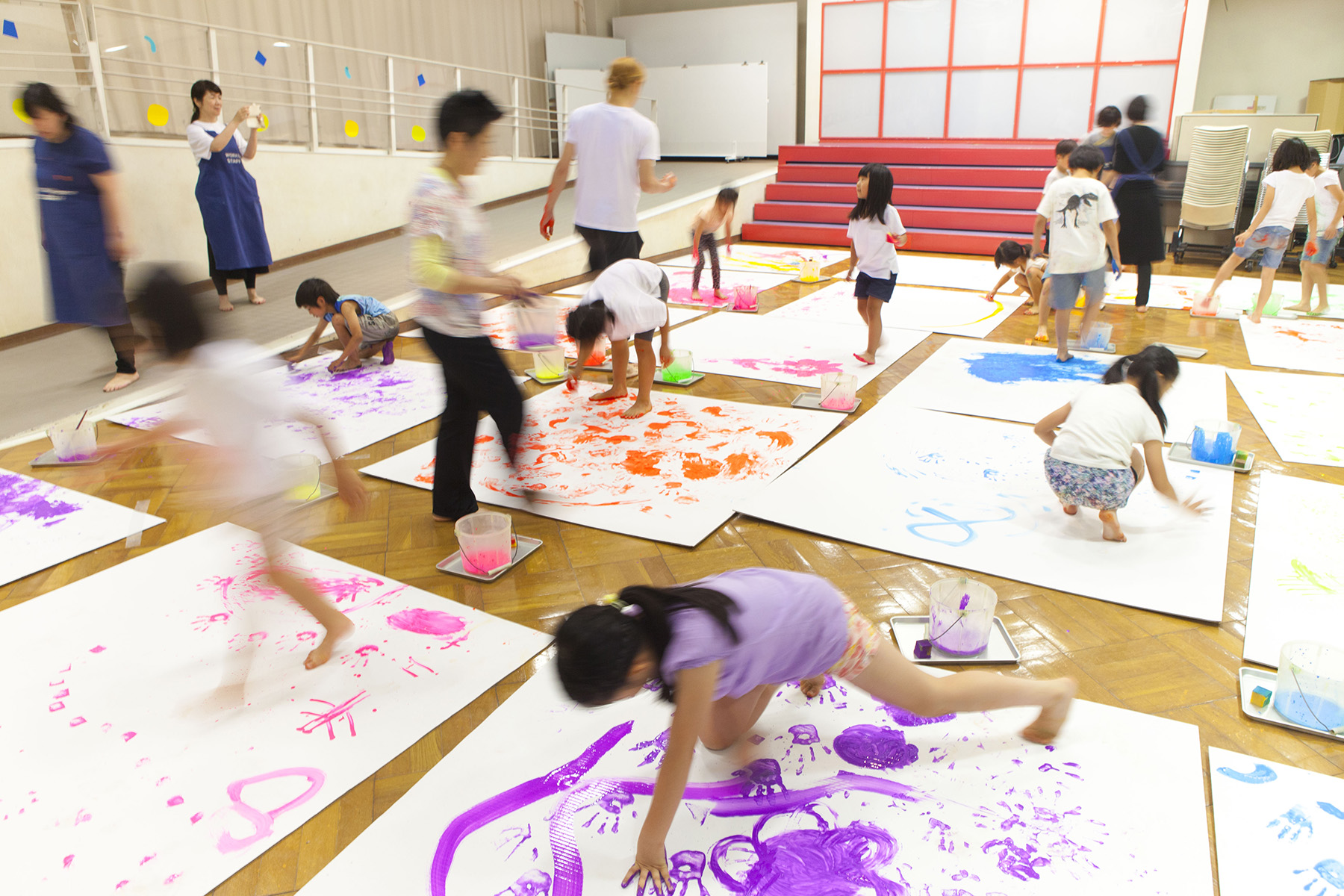
Each person will color a large canvas using their hands or a sponge.
How do you feel about the collaboration between KAAT and Yokohama Museum of Art?
I believe that art is a way for people to connect with each other. In that sense, it is good for the region for theaters and museums to work together.
I think there is a kind of love for the local area that is unique to people who live there. Kanagawa Prefecture has a unique culture, and I think it's wonderful that theaters and art museums are connected.
Mr. Moriyama is from Sagamihara, Kanagawa Prefecture. How do you feel about working in Kanagawa Prefecture?
I grew up in Sagamihara all my life, and when I entered the world of theater, I moved to Tokyo and left my hometown. Although I am still active in Tokyo, Sagamihara is a place I can return to immediately.
I'm happy to be able to work in my hometown of Kanagawa. Dance can also play a role, such as for the sake of the hometown or as a prayer. For example, shrine maiden dances, Bon dances, and other dances that pray for something local are often used as a medium. You have a strong sense of dancing in that area. So I'm really happy to be able to dance in my hometown.
What are the highlights of the new work “Alice in Wonderland” produced by KAAT?
We are currently in the middle of production. I'm having various dancers express themselves with their bodies, and I'm really struggling with them right now. The original work is based on the theme of children's imagination by Lewis Carroll, and depicts the world of imagination that a young girl, Alice, sees in her dreams. The fact that adults express children's worlds means that their imaginations are just as amazing as children's. Adults also want to show their imagination. Dance is my method of expression, so I want children to see the imagination that comes from the body, and the things that can be imagined and created with the body.
Did you make any discoveries during this workshop that will lead to your new play?
In no time, the white canvas was dyed with crayons. It was made really quickly. Colors, lines, drawings. I could feel the energy coming from their imagination. The imagination is expressed concretely, and a ``buzz'' of energy is born. I want to make use of that energy on stage. I don't want to lose to the energy of these children.
I can draw, but I tend to try to arrange them and make them look pretty. Children today are not able to draw the pictures they want to draw. I sometimes get jealous of children's imagination and the improvisational things that go beyond creativity.
Since it's a stage play, there are steps and a script. Simply exploding images freely is not enough. I create it while balancing both improvisation and planning.
But like a child who doesn't do calculations and wants to draw well, I want to create a stage where there is a part to remove hoops and a part to put together. There is a script, but as I watched the children today, I thought that I wanted to leave room for the improvisation that can be created live.
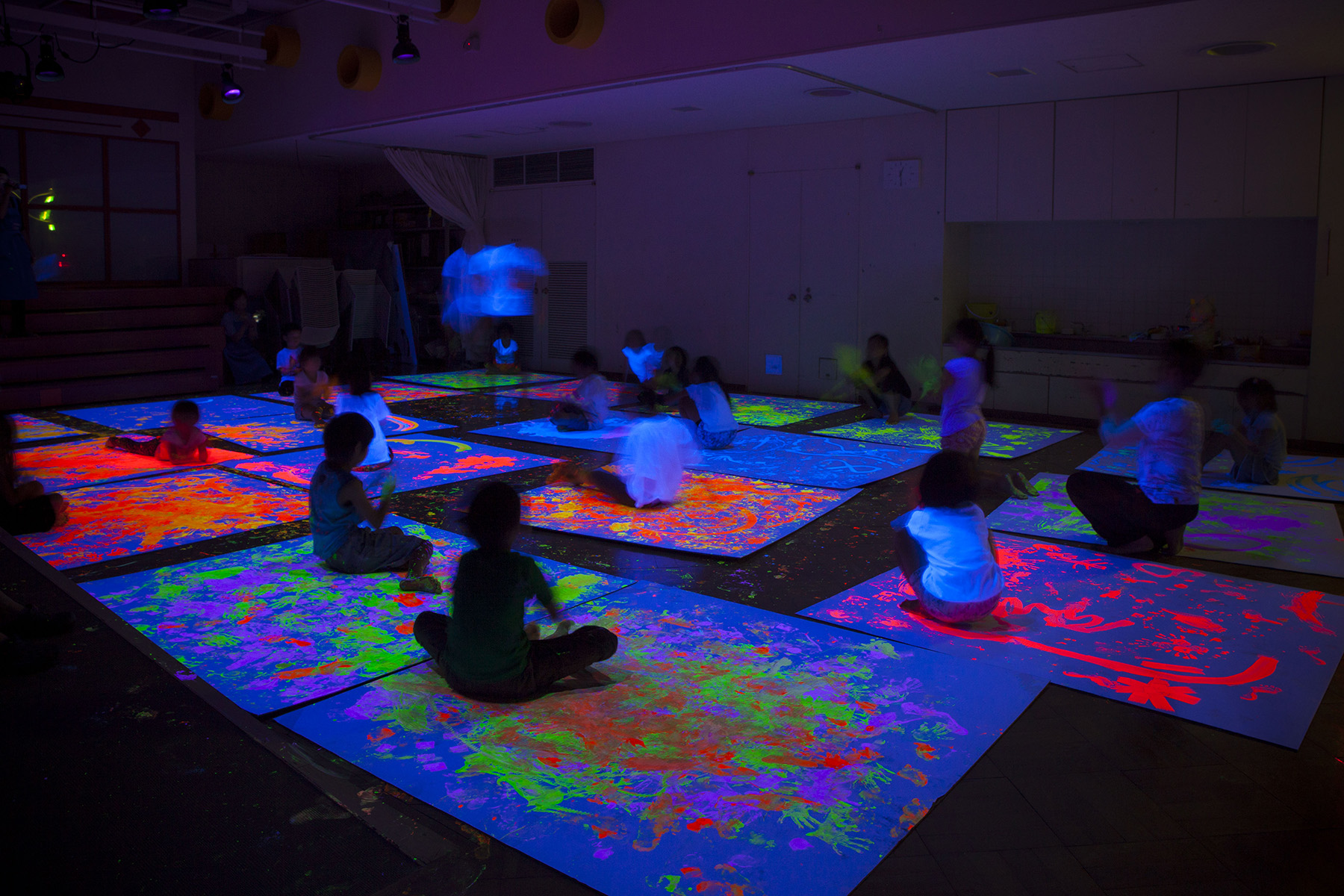
When you cast a spell, the electricity goes out and only the painted areas appear under the black light.
The hands and face covered in paint will also gradually glow.
<Collaboration between theater and museum>
KAAT produces a variety of programs titled Kids Programs every year. The audience is children and adults. ``We aim to create cutting-edge and rich performance works that are not meant to be played by children, but instead serve as a mirror of the times.We aim to work with artists, actors, and performers who are active on the front lines to create authentic works that reach both children and adults. I create works with the goal of "creating creative works."
In addition to the exhibition space where many exhibitions are held, the Yokohama Museum of Art also has a dedicated atelier for children, which is rare in Japan. In the very popular "Parent-Child Free Zone," children can freely draw pictures and play with clay.Rather than "teaching them art," we bring out the children's "want to do" and enjoy creating things with free ideas. We provide an environment where you can.
This workshop was planned and produced in collaboration with the Yokohama Museum of Art Children's Atelier as part of Kanagawa Arts Theater's ``KAAT Kids Program 2017''. A new dance workshop and a new art workshop were planned through collaboration between KAAT Kanagawa Arts Theater, which knows Moriyama's possibilities beyond dance, and Yokohama Museum of Art Children's Atelier, which is a professional in children's art education. Ta.
``I have always felt that when children move their bodies, their hearts are relaxed, but by dancing with Kaiji, even though it was only a short hour, I could see how the children's hearts were becoming more and more relaxed. I understood it when I saw it,'' says Tomomi Okazaki, head educator of the children's atelier at the Yokohama Museum of Art.
``When I draw, I tend to draw something concrete, but the lines I drew today are the trajectory of a dance.I can't draw them consciously.Drawing lines as they are is abstract. It was a simple message, but I think it was clearly conveyed to the children." The experienced staff at the children's atelier, who provided full support for the workshop, expressed their admiration for the children's open-minded expressions and Mr. Moriyama's skill in bringing them out.
In addition, Tomoko Onuma, a producer in the production department of Kanagawa Arts Theater, said, ``I once again thought that Mr. Kaiji was an honorable man.Also, there was a feeling of security in the children's atelier.No matter what happens, they will be okay and they will take care of him.'' I felt the depth of the experience. It was a really great workshop, with the children spreading out the paper as much as they could, being in a non-daily environment, and seeing each child express their own individuality." I felt a positive response.
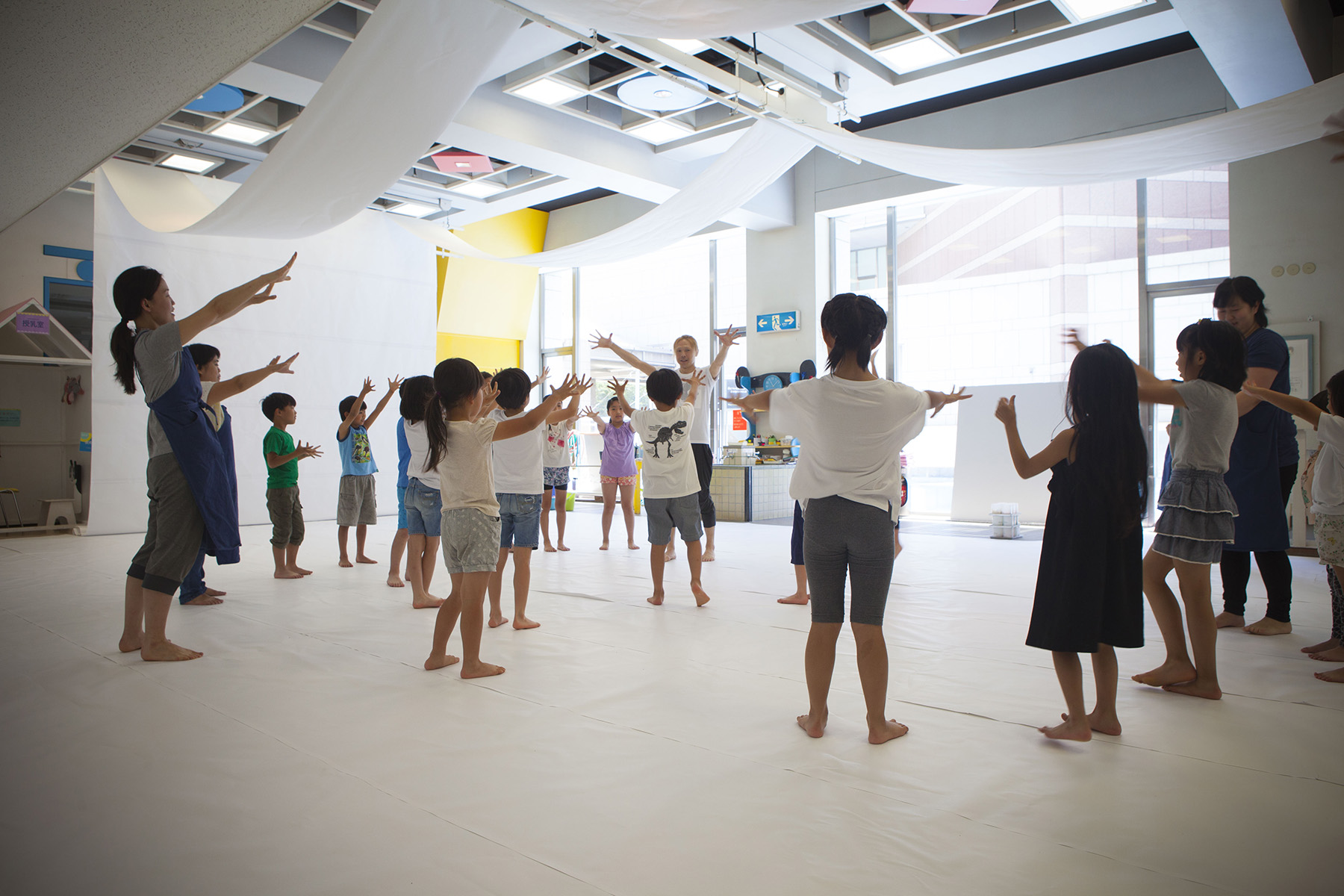
• KAAT Kids Program 2017 “Alice in Wonderland”
Date: July 22nd - August 6th, 2017
Price Adults: 3,500 yen Children (4 years old and over - high school students): 1,500 yen Parents (adults + children): 4,500 yen
Sponsored and planned and produced by Kanagawa Arts Theater
Direction, choreography, art: Kaiji Moriyama
Original work Lewis Carroll
